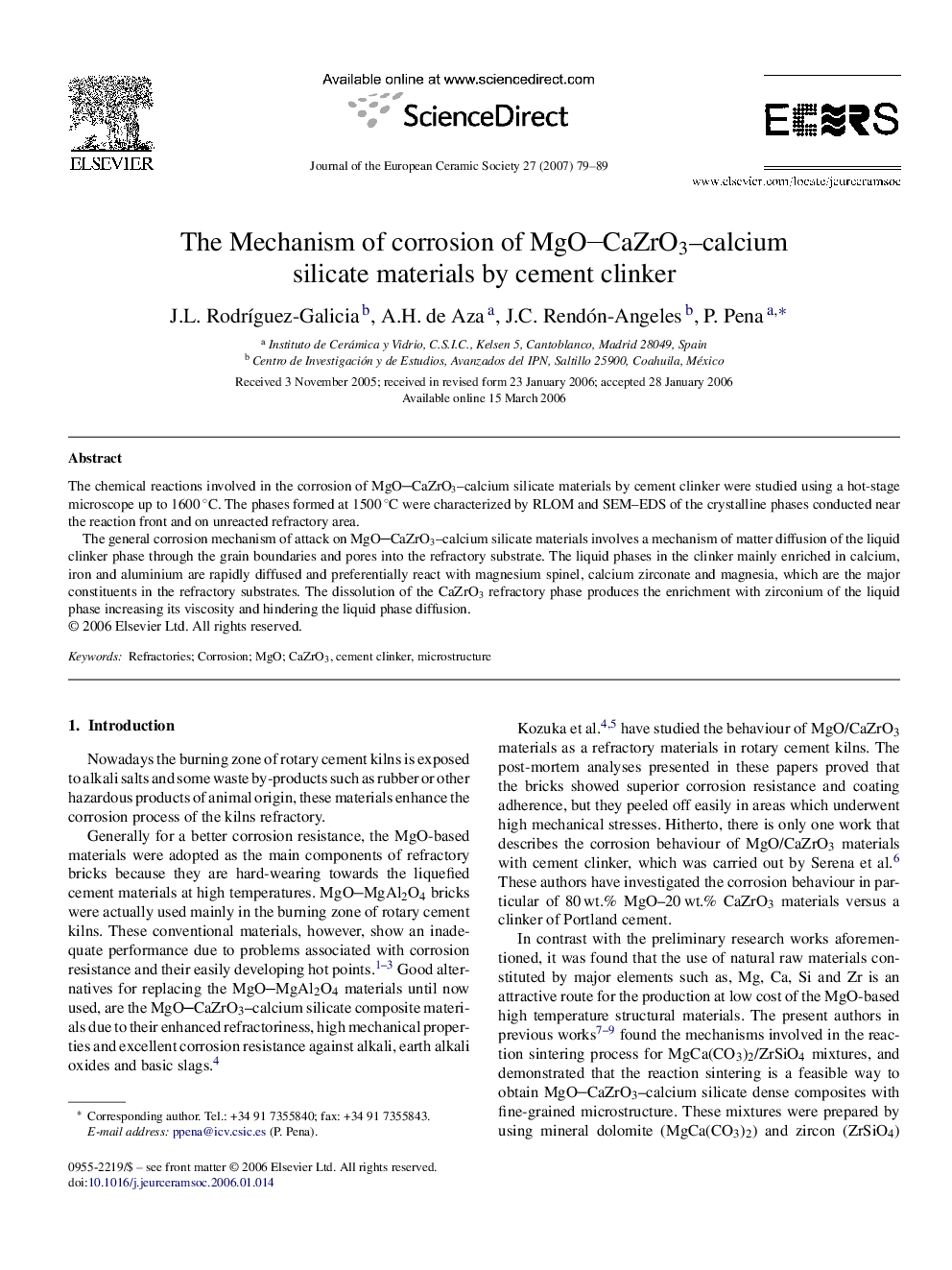| Article ID | Journal | Published Year | Pages | File Type |
|---|---|---|---|---|
| 1476953 | Journal of the European Ceramic Society | 2007 | 11 Pages |
The chemical reactions involved in the corrosion of MgOCaZrO3–calcium silicate materials by cement clinker were studied using a hot-stage microscope up to 1600 °C. The phases formed at 1500 °C were characterized by RLOM and SEM–EDS of the crystalline phases conducted near the reaction front and on unreacted refractory area.The general corrosion mechanism of attack on MgOCaZrO3–calcium silicate materials involves a mechanism of matter diffusion of the liquid clinker phase through the grain boundaries and pores into the refractory substrate. The liquid phases in the clinker mainly enriched in calcium, iron and aluminium are rapidly diffused and preferentially react with magnesium spinel, calcium zirconate and magnesia, which are the major constituents in the refractory substrates. The dissolution of the CaZrO3 refractory phase produces the enrichment with zirconium of the liquid phase increasing its viscosity and hindering the liquid phase diffusion.
